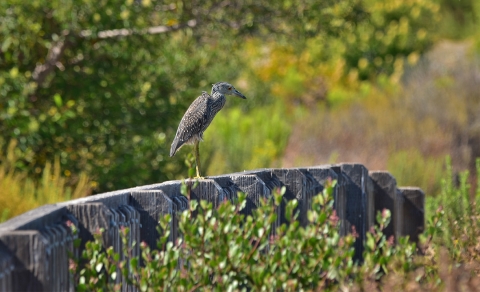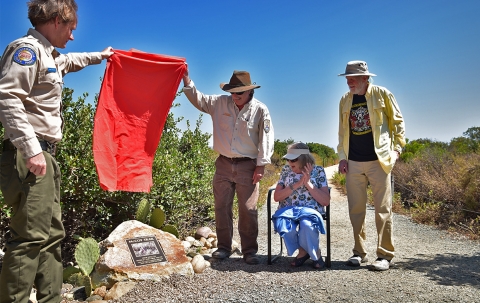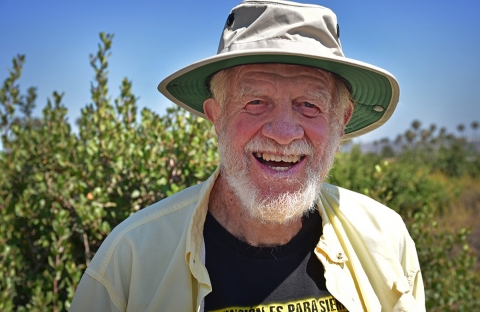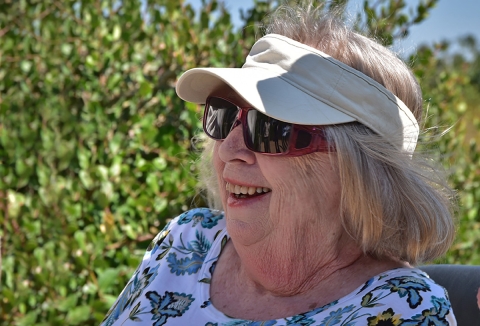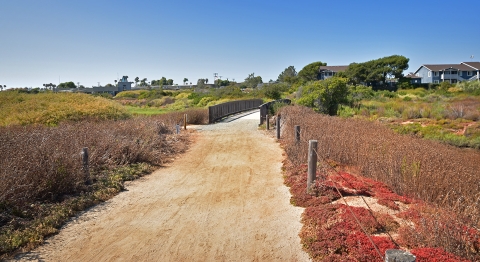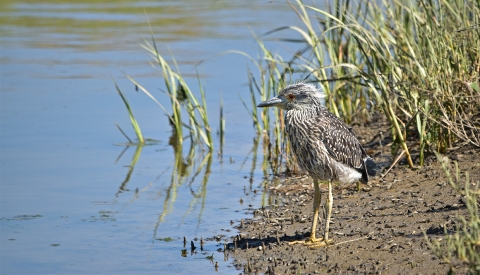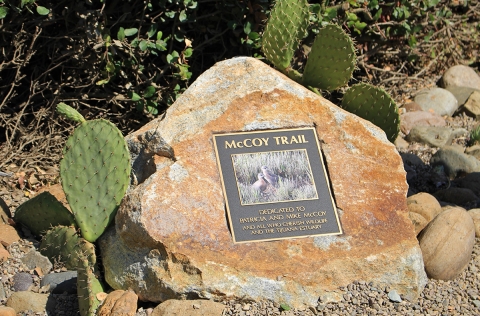It was November 1980, when the phone rang at the Imperial Beach home of Mike and Patricia McCoy. Ralph Pisapia, manager of the U.S. Fish and Wildlife Service’s Ecological Services office in Laguna Niguel was on the line. He asked the McCoys to meet him at the end of Seacoast Drive the following morning at 10.
The McCoys held their breath as they drove to meet Pisapia. All of their time, money and energy expended over the past 10 years to save the Tijuana Estuary rested on this meeting.
When the McCoys arrived they could see a government vehicle was already parked.
Four men got out of the car while another man pulled up in a pickup truck. The man who got out of the truck was a stocky no nonsense American cowboy, complete with oversized belt buckle and Stetson hat. “Ralph told us, ‘I want you to meet Larry Dean, manager of the Tijuana Slough National Wildlife Refuge,’” recalled Mike. “He was the right man at the right time.”
And it was done. The estuary that the McCoys had fought against developers and local officials to save was permanently protected as a national wildlife refuge national wildlife refuge
A national wildlife refuge is typically a contiguous area of land and water managed by the U.S. Fish and Wildlife Service for the conservation and, where appropriate, restoration of fish, wildlife and plant resources and their habitats for the benefit of present and future generations of Americans.
Learn more about national wildlife refuge .
“Mike and Patricia are two of the most amazing people I’ve been privileged to befriend and work with during my career with the Service,” said Brian Collins, the current manager of the Tijuana Slough National Wildlife Refuge.
Recounting the story, almost 40 years later, the McCoys still seem surprised what they managed to accomplish.
“It was a do or die situation,” said Mike.
Though Mike and Patricia grew up in vastly different places – he’s originally from Colorado while she grew up in suburban Gloucester, England – they share a love of nature, especially wetlands and marshes.
After earning his veterinary degree from Colorado State University, Mike worked for the Service then the San Diego Zoo, and eventually landed in Imperial Beach as an associate in a private practice in 1970.
Gazing across the estuary for the first time, Mike said, “I saw a fantastic marsh system. I had seen the marshes in northern San Diego County, and they all had rail lines or roads through them. This marsh was special. It had not been impacted by the hand of man. It seemed relatively pristine, absolutely beautiful.”
More than 370 species of migratory and native bird species use the estuary, which is also a critical nursery for fish.
But in 1970, the estuary was about to give way to development. “I found out they were going to dredge it,” said Mike. “Everyone was saying how much it would improve the city, economics; the usual stuff. I told them you’re not going to do any of that in the marsh.”
The idea of conserving the marsh was not popular with most of the residents and elected officials, and the McCoys were frequent targets of threats and harassment. It was a rough and tumble fight and there was a lot of money at stake. “We got death threats all the time,” said Patricia.
Ignoring personal risk, the McCoys launched their campaign to secure the estuary. “We decided to go the political route,” said Patricia. “We lobbied.”
Those who wanted the estuary developed lobbied equally hard against the McCoys, including trying to get Mike fired from his job.
In 1972, the southern portion of the estuary was purchased by California State Parks for the 1,316-acre Border Field State Park, but most of the northern portion of the marsh remained vulnerable to destruction.
The McCoys took their case to Washington, D.C., where they secured a meeting with Nathaniel P. Reed, undersecretary for the Department of the Interior. Mike told Reed about their problem. Reed suggested getting together with their congressman, Representative Lionel Van Deerlin.
“He [Van Deerlin] got it,” said Mike. “He understood the value of the estuary.”
Mike explained, “when you look at a flyway, you don’t look at the whole flyway, you look at stopover points.”
The McCoys also reached out to the Service. “We were trying to get the Service to look at the value of urban refuges,” said Patricia. “Between Camp Pendleton and Tijuana, the estuary is like a breathing space.”
Sensing they were losing the fight to develop the estuary, some of those opposed to the McCoys efforts were growing increasingly hostile.
One evening, the McCoys and a group of volunteers were at the local firehouse celebrating a cleanup day at the estuary. What happened next is still not completely clear to Mike. “It all happened so fast,” he said. “Three guys walked in packing guns. One of them drew and shot a man in the face.”
It was pandemonium recalled Patricia. “People were climbing up the back wall of the property or running into the street to get away. They were trying to get an ambulance. Mike went back inside the firehouse to help. “I rolled the guy over on his side so he wouldn’t choke to death on his blood,” he said.
“A couple of the people in the crowd told me the gunmen were looking for Mike and thought they had him picked out,” said Patricia.
The bullet lodged in the man’s hard palate and he survived.
Undeterred, the McCoys continued urging the Service to buy the northern part of the estuary from its owner - Helix Land Company. Mike met with company executives, urging them to reach an agreement with the Service on the sale of the estuary land.
“I told them, you’re never going to build a marina here and if you don’t work a deal with the Service you will wind up with egg on your face.”
Finally, on December 24, 1980, the deal was sealed. For $7.6 million, 606 acres of land transferred from Helix to the Service. At the time, it was the most expensive dollar per acre refuge acquisition in the history of the refuge system.
“They said it was impossible to do,” said Mike. “It was amazing. It really was.”
“We are now well into the third decade of scientific study in this estuary,” said Collins. “Lessons we learn here are transmitted to a global audience of conservation professionals and the general public.”
The McCoys remain committed to protecting habitat across San Diego County, but the refuge holds a very special place in their hearts. “Mike visits the refuge almost every day. He just loves it,” said Patricia.

